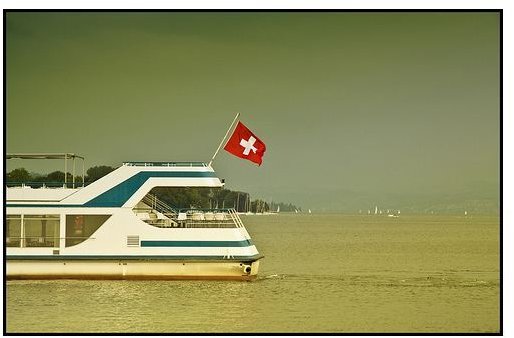Common At Sea Nautical Etiquette and Flag Rules
What do Flags Mean at Sea
“Vexillology” is a term used for a scholarly study of flags in general. However, in the shipping industry, the word vexillology has several dimensions attached to it. Flags have been used by ships, both commercial and war, since the advent of shipping activities. On ships, flags are a symbol of honour, dignity, and ownership. They stir emotions of pride and respect in crew as well as passengers’ hearts. There are several rules and regulations attached with hoisting flags on ships. Apart from the national flag which the ship belongs to, there are various other types of flags that are used for the signalling and navigational purpose. These flags are international code flags which are used to pass signals between two ships or between the ship and the shore. There are several rules and regulations that govern these flags. The article describes the common flag etiquette and rules at sea.
Image: Flickr Creative Commons - Flag at Sea - by Problemkind
Flag Etiquette at Sea
Ocean going vessels display flags for mainly three reasons – to display the nationality of the ship, to display the status assigned to them because of the services they offer, and to provide courtesy in accordance with the international rules and regulations. Whether you are sailing a ship, ferry, or a boat, the flag etiquettes at sea remains the same for all. Some of the main flags that are used on ships are ensigns (flag with the colour of nationality), jacks (flags smaller than ensign used for signalling and distinction), house flags (flag of the owner or company), pennants (flags used by ships to signal that they are warranted by the Navy to be used as war ships), and signal and rank flags. It is a general rule that all the flags should be raised at 8 a.m. in the morning, whether the ship is at port or at sea. According to the U.S rules for flag usage at sea, the ensign flag should be the first one to be hoisted in the morning at the stern of the ship. After that, the jack and house flag are to be hoisted at the bow and mainmast of the ship respectively. There are rules that govern the position or the height of the flags as well. For example, the ensign flag that marks the nationality of the ship should be flown above all the other flags and the pennant should be flown above the house flag. However, the house flag, which was initially hoisted at the stern, is now flown at the starboard yardarm.
Signal Flags
Apart from the above mentioned flags, there are several signalling flags with different colours and shapes. There are around 26 alphabetical flags, 10 numeric flags, along with one answering flag and three substitute flags. All these flags are used together or individually to send signals to other ship or port. Generally, 2-3 flags are used in combination along with pennants for sending the message precisely. Alphabetical flags are also used individually to pass the necessary signal. For example, flag A is used to signal “I have a diver down” whereas flag B is used to signal “I am taking in or discharging, or carrying dangerous cargo.”
When Leaving a Port
When the ship leaves the port, the flag of the destination country is hoisted at the foremast of the ship, along with a signal flag at the starboard. In case a pilot is on board, the alphabetical flag H is hoisted. In case the manoeuvring of the ship continues even after the sunset and the pilot is still on board, all except the pilot flag are hauled down. When the ship reaches the destination country, the ensign flag of that country is flown from the yardarm of the ship. This flag is also termed as the courtesy flag. The flag of this country is always flown above all the other flags. However, it is to note that if a merchant or private ship is passing by a warship, the merchant ship must lower its ensign flag as a matter of respect to the warship. The warship also lowers it flag as an acknowledgement to the respect given.

Image - Creative Commons/FlickR - Flags Fluttering on Mast- by Hoyasmegh
When Arriving at a Port
When arriving at a port and before reaching the pilot area, the ensign flag of that country is hoisted at the stern of the ship. The ensign of the country from where the ship came is hoisted at the bow of the ship. An alphabetical flag G, which signals the need of a pilot, is also hoisted. When the ship leaves the pilot station and before it reaches the quarantine station, the quarantine signal flag Q is hoisted. The Q flag is removed before the ship reaches the berth. Apart from the above mentioned rules and regulations, there are several other laws that govern hoisting of flags at sea. However, the rules are more stringent in naval war ships than in merchant ships. Moreover, different countries have their own rules and regulations for flag salutation on ships. But the international flag codes and rules remain same for ships of all the countries around the world.
